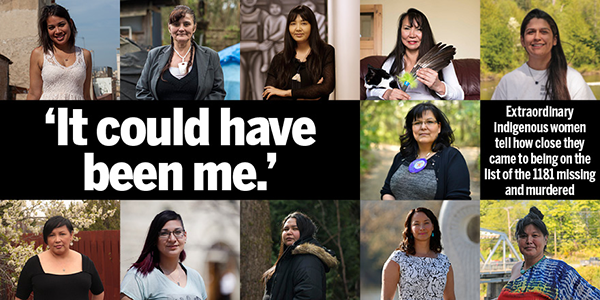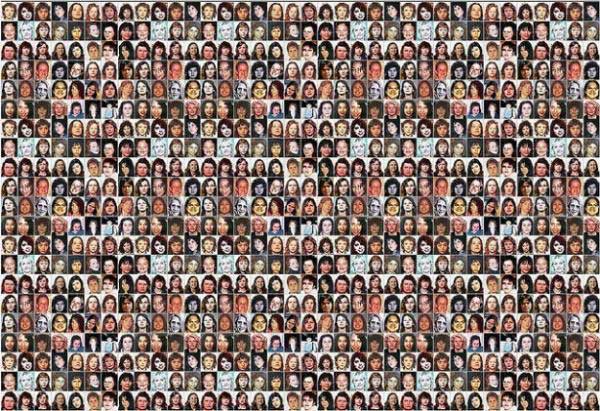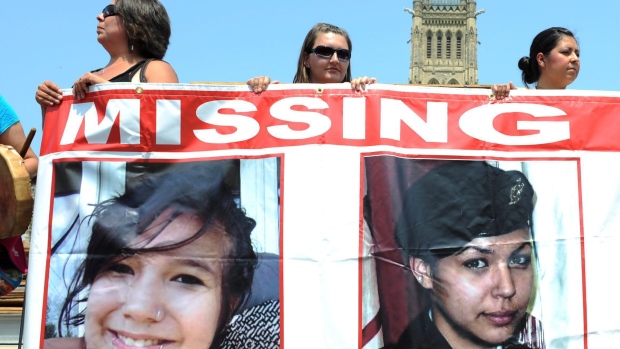
21 Dec On Canadian media coverage of #MMIWG – Missing and Murdered Indigenous Women and Girls

Late in 2014, I had a lengthy conversation with Stefana Fratila, a graduate student in political science at the University of British Columbia, who was working on a essay that examined media coverage of missing and murdered Indigenous women and girls in Canada. In the spring of 2015, she published her paper, titled Tracing Indigeneity: The Media’s Portrayal of Missing and Murdered Indigenous Women and Girls. If you’d like to read it, you can send her a request here. What follows is an unedited transcript of our chat.
Stefana Fratila: I’ve noticed a particular shift in media coverage around MMIWG over the last little while. I am wondering, have you noticed a shift at all?
Duncan McCue: There’s been a huge shift in particular since the murder of Tina Fontaine. It has gotten mainstream media attention. So that particular tragedy has gotten a lot of attention which has galvanized calls for an inquiry. That I’ve definitely noticed and was, frankly, surprised by. That happened in August. That’s been the biggest shift, I think.
I noticed a shift earlier that had partly to do with media but that had happened in the Indigenous Resurgence realm where there seemed to be a lot of online activity and blogging after Loretta Saunders.
What I just mentioned was mainstream media. Loretta Saunders – there was certainly coverage of Loretta Saunders, no question about that. But it didn’t have the sustained kind of media coverage that Tina Fontaine did. There are a couple of reasons for that, I guess…I can’t put my finger on why Tina Fontaine –
In particular –
– In particular, has gotten as much attention compared to other MMIW. I don’t know. It’s not that it’s the first teenager. Not at all. It’s not that it’s the most horrific. Not at all. It’s not that it’s new – Lord knows no, right? So in part it has to do with – I mean, many people have asked what has happened to Idle No More. And Idle No More didn’t just fade away. The hashtag Idle No More may have disappeared or be less in use but what that online and social presence taught many in the Indigenous community and particularly activists is that they had clout all of a sudden – and that has continued. And I think maybe that what took place with Tina Fontaine was very much a continuation of that social media presence that we saw start and really come to a head with Idle No More. Because I think the mainstream media really responded to the community outpouring with regard to Tina Fontaine. And because the community was able to sustain it, first off in its outrage when it happened, then coming together to say we need to mark this and see change, that carried the story for at least a week, a week and a half. And then the community continued to respond with the Drag the Red campaign[1] and again all that gives a story legs, in media or newsroom speak. So I think that’s one of the reasons that Tine Fontaine continued to be in the news. The other thing which kept it in the news was the Prime Minister’s reaction, when he said a very quotable sound-bite, “this is a crime, not a sociological phenomenon”. You know, there are a number of things that need to happen to keep a story in the mainstream media. One is that it needs to continue but then at some point the politicians need to react. If and when they do, then it can carries on for another new cycle. And that happened in this case, his comment was controversial. So all of that happened with Tina Fontaine and the other thing that happened that didn’t happen with Loretta Saunders was that the RCMP had come out, by the time the Tina Fontaine story hit the news, the RCMP had come out with their statistics, which gave some hard numbers to the claims that activists had been making for quite some time. But it gave mainstream media (it’s been well-documented, tend to rely on official sources) So when we add an official number from the RCMP, combined with Tina Fontaine and the Prime Minister’s statement, all of it gave it something that the mainstream media turned its attention to.
I’ve noticed that there has also been a shift in paying attention to actual communities rather than like in the past it often would have been framed, at least when I was a kid I remember, it was always about, you know, that serial killer or –
Yes.
– it was often about the criminal, rather than the survivor or sometimes the victim, depending on the outcome. And it seems, I’ve noticed in Sun News, and all kinds of other media outlets that I never would have guessed would cover something in the way that they do, I’ve noticed that they do pay attention to community reactions and give more space to Indigenous voices than I’ve seen in the past. I can’t quite figure out why yet.
So, what kind of time period are you looking at?
I’m looking at the last six months, or from May till now.
Okay, because if you’re taking the long view, you would have heard much less about Aboriginal women in particular and communities because First Nations didn’t speak out about these things because they were so often ignored. The media were ignoring them, ‘just another Dead Indian, doesn’t matter’ and, if they did speak out –
It would be manipulated.
Well, yeah. Negative interactions with the end result. So that’s the longer view, but in the past six months, again I would say with this issue in particular, people recognize that reporters are listening and there are lots of people who want to share the story of their loved one who has gone missing and their grief and their need to find some resolution to it and for the state to acknowledge what’s going on here. So it becomes a self-fulfilling prophecy in some way. When there is reporting, there are more people willing to come forward and share their story and so reporters, when they can find people who are able and willing to talk, it generates more stories.

From a cover story by Maclean’s magazine in June 2015.
Definitely. Even Al-Jazeera ran a piece on this in the last little while.
It’s interesting to look at the way that Al-Jazeera have been covering Native American issues.
Do you know more about this? I guess you must.
I do. And I think it’s very, very intriguing to compare Al-Jazeera to North American media coverage, in particular American media coverage. In a very short time period, they’ve done a better job of covering Native American issues than any mainstream American outlets. For a couple of reasons: 1) I think their mission is to report the underbelly of America in a way that American media don’t like to do and Native America is the underbelly of the US. It’s very interesting to watch what they’re doing. So obviously if that’s your mission, and they make no qualms about that, then MMIW fits in beautifully to that mission.
Absolutely. I’m also trying to trace back more localized stories, more alternative press renditions of what’s going on and kind of figure out not necessarily who talked about settler-colonialism first, or what words they use, or what kind of language do they use to talk about that, but just trying to see that it starts locally, because it seems to me that it’’s not going to be the National Post that picks up on settler-colonialism and puts that theme out there for its readers. I’m interested in a lot of language because I’m seeing journalists as storytellers and journalism as storytelling. And the language that I’m coming from is largely academic, and well, it’s problematic because it is sometimes – often – alienating. But I’ve also noticed some media that is not necessarily widely read but has a committed following of local readers.
So you’re talking about the Observer, the Tyee?
Yes, and I’m still just learning about their own internal biases. I’m still learning, basically. But that issue has, I’ve noticed, been covered by these media outlets and that it was covered, early on, in a particular way. And I’m wondering if that language – the key word is inquirythat keeps coming up. So that’s the latch, that we need the inquiry. But there is something else that is not being said often, and I think that is just: ‘why is this happening’.
Absolutely. And I think you picked up on a good point. One of the things I talk about in the guide is colonial amnesia. Media is as guilty of that as most Canadians are.
Right.
And I myself don’t use the terms colonialism often, if ever, in my stories. In part because I find that academia and jargon is alienating to people. Colonialism is a complicated concept if you don’t have the education to understand what that means and in a 2-minute news story or 800 word article I am not able to educate you on that.
Of course.
So to just throw it out there, you also have to recognize that there will be a large part of your audience will find that word alienating. They will turn off and not pay attention.
Shut down.
They will, because it is a word that is used amongst certain academics, amongst activists who a certain audience will have little regard for. If they hear it in your news reporting, they will just shut it down, and the idea that I am trying to reach as broad an audience as possible. I don’t use that particular word although I would say that some of my stories are definitely critiques of neo-colonialism, there’s no question about that, but I may not use that particular word. I guess you were asking why media may not use that word. That’s one reason: avoiding academic jargon. The second one is that there’s a long history of the media propping up the status quo in Canada. So if you go into an average newsroom CBC Vancouver here, and did a straw poll about whether or not the Crown title is justified in Canada, most people in this newsroom would be quite astonished –
–at the question.
that you would even ask that. So that’s why they’re not including it in their reporting because they are like many other Canadians, they have an assumption about the founding of this country which slowly but surely many Indigenous activists and employers are chipping away at much to the chagrin of many politicians who say this is all about judicial activism.
It’s always a wake-up call for me to leave my academic circle and remember that most people carry these assumptions.
Yes. The William case, right? Hailed as a victory. Celebrated as a victory. But the underlying assumption of Crown title still…
Remains.
…has not been questioned by the Supreme Court of Canada, it has simply been assumed.
I was also wondering if you, as a journalist, when you frame a story, is it generally frowned upon to use language that would name a perpetrator? In this case, the state? Or if we are going to look at what Harper said and looking at it as reporting on a crime, would it be unwise to tell the story, or would it seem too biased? I always wonder how journalists grapple with that, their own opinions.
The straight-up answer is that journalists don’t put their own opinions into their story. We’re supposed to be objective, unbiased and balanced – those are all important principles of journalism. Of course, anybody that knows anything about journalism knows that there is a great deal of subjectivity and bias in every piece that we put together. When we choose clips, when we choose narrative frames, when we choose shot-to-shot-to-shot what shots to put in, we are processing what information to put in through our own lens. So for a typical news reporter who is investigating the murder or disappearance of an Indigenous woman, there are all kinds of – the impetus for most reporters would be to find out who did that and to name that person. And we will go to extraordinary lengths to do both of those things in any crime. Any crime, right? I work with many colleagues here who are fantastic at finding out who did it, getting that person’s picture up as fast as possible, helping people understand what the background of that perpetrator was so that they can then process it and, you know, that’s happening with the shooting of a police officer in Kamloops right now. I mean, my colleagues are all in there busily finding out all kinds of things about the guy that did that so that our audiences can understand what happened and the context for it. So we’re really good at that. I think the next part of your question was including the state usually in action, in terms of being part of the crime. Reporters are also really good at wanting to hold governments to account. That’s part of a reporter’s DNA ever since Watergate: take down governments. Once you figure out the immediate thing (who did this?) the next question is often: was government responsible somehow? Could it have been prevented? That’s the next obvious question. Once you name what’s happened, could it have been prevented? And often the answer is yes. So there will be a line of inquiry, more stories the next day, asking who – if anybody – should have done something to prevent this from happening. And, again, you’ll see that in any story, right? The shooter on Parliament Hill. After the dust has settled, Day 2, Day 3, Day 4 of the story, you’ll start to see stories emerging, could things have been done differently, did someone drop the ball, did X & Y Minister not approve such and such spending. So you’ll see that kind of line of inquiry in many stories about MMIW. The problem here, as with all Aboriginal stories, there is no clear-cut answer: child welfare is an issue, Indian Affairs is an issue, housing is an issue. So there are many prongs of government which could be held to account for the situation that many Indigenous women find themselves in that make them vulnerable. So there is no easy answer for a reporter, again remembering that they have a) a deadline and b) limited space to produce their story. There’s no easy line to say ‘there’s the person that we need to hold to account’. And when things become gray and fuzzy and complicated, that’s when you’ll start to see reporters lose interest in a story.
Which is why the inquiry has become the focal point of much of the reporting, Is an inquiry going to solve what’s happening to MMIW? Not likely. It may point towards some answers but reporters are looking for something that will come out of their new-story that they can point to and say, ‘here’s a solution’. We know the problem, we’ve reported on the players, here’s the solution. And that has become the easiest solution that affects all of these cases. With Tina Fontaine it could have become a child welfare story and it didn’t and I don’t know why. It could have become a Winnipeg police force story. It has, to a certain extent, locally but not so nationally. Nationally, you’ll find that most of the media will be mentioning this inquiry because that’s something they can grasp onto and say, ‘here’s the solution’.

Credit: CBC
I’m wondering if you’ve noticed if there is a sense, with a story like this that is a larger phenomena that is not just about one person, has there been a sense at all of the story being covered for a long time by more independent media and now being picked up in a more particular way by mainstream way? I’m not sure where that power comes from, whether it’s the editors, or…
Well, yes and no. I mean, to some degree, I dispute suggestions that the mainstream media have ignored this. The Vancouver Sun was responsible for breaking Pickton.
Definitely.
And there should be no doubt that there are many mainstream media outlets to have done remarkable work to bring stories of MMIW to light. Because they have the resources, the skills, the talent – frankly – that many independent outlets simply don’t have. So there are instances of fantastic reporting by mainstream media. That said, it comes in waves because mainstream media is also notorious for lacking attention to something that isn’t new and, unfortunately, this problem of what happens to our women is now becoming quite a long-standing problem.
It’s ongoing.
So what’s new is a test of every news story that comes through the doors everyday. And so even if an editor is interested in publishing something, that’s going to be the first question they ask and a reporter needs to come up with new and different angles, and that’s not always easy to do. ‘Yeah okay, it’s another sad, weeping family. I can list to you half a dozen other sad, weeping families we’ve had in the newspaper this past year. So why is this story any different, Reporter Joe? Reporter Meg?’
I compare it often to residential schools, right? The conversation I often have here is ‘it’s another residential school story’. But anybody that knows Indigenous communities knows the impact that residential schools have and continue to have to this day and that the residential schools are at the root at many of the contemporary problems in Indian Country. But you’ll find many mainstream newsrooms just don’t want to report on residential schools, they go ‘we know that story’. That’s a failure in our reporting if our audiences aren’t paying attention to those stories or if our newsrooms aren’t interested in – that’s a failure in the way we’re pitching the story, that’s a failure in the way that we’re researching the stories. We need to come up with new angles to residential schools because it continues to be an ongoing public interest/issue in this country. And in the same way you see lulls in the reporting on MMIW, that requires an editor who says, ‘come up with an angle on this, we want this on the front page’. And that takes time as a reporter. You can react to breaking news. But to come up with different angles, more insight, more access – whatever – takes time to research and report. Especially on these issues because they are so sensitive and often require a lot of trust-building to report at all.
On that note, I know that you do a lot of reporting within Indigenous communities and I’m wondering if you’ve noticed any positive impact, either from your own stories, heard positive feedback from members of communities saying ‘this story helped’.
In regard to Indigenous women?
Anything.
Sure, regularly. I mean it happens to me all the time, that’s why I got into this business and hopefully you throw a story out there into the airwaves and hope that people watch and that it provokes a reaction and that it changes people’s lives – and maybe even changes the world. I don’t know that my stories have changed the world, but I know that they’ve changed people’s lives. I know that because they’ve told me, I know that because I’ve seen what happens after stories go to air. Whether it be as simple as people having confidence that their story matters. Sometimes people don’t really know their own stories and it takes a storyteller to process their story and share it back with them and then they realize the grand project that they’re involved in. But, yeah, I’ve worked on stories that have helped raise money for such and such a project, or that have gotten government attention for this kind of thing – I mean I could list all kinds of stories that myself and other reporters here have worked with Native communities where there have been immediate impacts. Immediate. Every reporter hopes for that, they hope that our stories are changing something for the better.
Do you get approached by community members or are you just in touch to kind of know when to go?
Both. I get lots of people who reach out and I do my best to respond to all of them but I can’t report on every story and I’ve got a balancing act: I have to take what a community or an individual sees as an important story and try to fit it in to what the newsroom sees as an important story and bridge the two.
You work here all the time? Do you report with any other outlet?
No, I’m CBC staff.
Okay. I think I heard a lot of what I was expecting, which is great because it fits nicely with what I’m hoping to prove. Is there anything you’d like to add?
The one thing I would add is – and there’s academia on this and I’m sure it’s in your paper – but when you measure column inches, when you measure narrative frames, treatment, all that kind of stuff…there’s no question in my mind that mainstream media treats the disappearance of a white girl more –
In a different way.
differently than they do the disappearance of a Native girl. There is no question in my mind and as far as I’m concerned there is also ample evidence that other academics have pulled together already: this is a race issue in the newsroom.
Is there anything you’d like to say about the gendered dynamics? How women are portrayed, generally speaking, as victims – if you’ve noticed anything?
That’s a more complicated question for me, I’m not an expert on that. I will give you this insight: there are lots of women in positions of power in newsrooms now. There has been a huge shift in the last ten and, certainly, twenty years. It’s no longer newsrooms of old, white men. I have many female bosses. If you’re looking at it through a gendered analysis, I think it is important to examine the compositions of our newsrooms today as compared to the composition of our newsrooms even ten years ago because I think women’s voices are much stronger than they used to be. I think that’s something that activists or, sometimes, academics may not be aware of or tend to gloss over if they’re looking at a feminist critique. So it becomes more complicated – are women in positions of power in newsrooms feminists? Maybe not. But that’s not necessarily my area of expertise.
Well there is so much on that and my research is not going to be too preoccupied with that. But I think what you have said is really important, that there is a shift that’s happened and obviously that affects the kinds of stories that are being told.
Yes, and I mean, reporting is more and more becoming a woman’s profession for all kinds of interesting reasons. 80% of our journalism class two years ago was female.
That is really interesting.
Yes. So men are becoming the minority. And a value in hiring positions, if you’re a young man you may be better off because a newsroom director trying to seek some balance in his hiring will have far fewer men to choose from these days.
There’s also a lot more women in universities.
Yes, that’s part of it as well. Are all the impacts of that beginning to be felt in the newsroom? Not yet.
Not quite.
Older, upper echelon is still predominantly white, predominantly male. But there are – you know, my head boss, Editor of Chief of CBC News (Jennifer McGuire), well-respected, and the Head of English Television at CBC (Heather Conway) is a woman – so the two most powerful people making decisions about our lives here at CBC Vancouver newsroom, are women.
[1] CBC News: Drag the Red campaign is “a volunteer effort to search for missing women on the Red River” Source: http://www.cbc.ca/m/touch/news/story/1.2831066
Duncan’s Post-script: I spent a good deal of 2014-2015 covering the issue of missing and murdered Indigenous women myself. Here are some of the stories I worked on.





